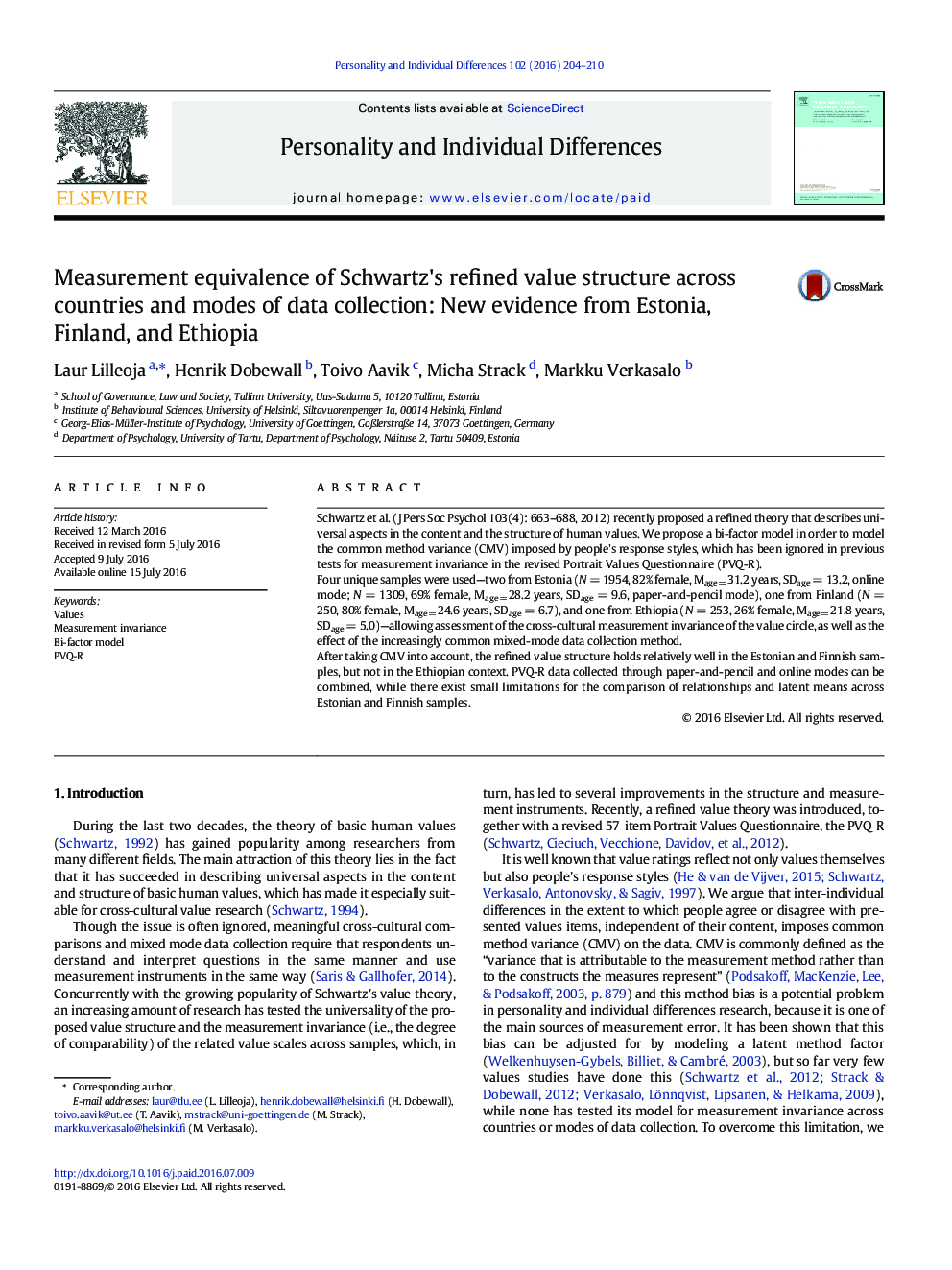| Article ID | Journal | Published Year | Pages | File Type |
|---|---|---|---|---|
| 889672 | Personality and Individual Differences | 2016 | 7 Pages |
•Bi-factor models can control for common method variance (CMV) in values ratings•Schwartz's refined value structure is more comparable across countries when accounting for CMV•The variance explained by CMV varies along with the level of socioeconomic development of a country•Values data collected in online and paper-and-pencil modes did not differ notably•Measurement invariance should be assessed for the entire value circle at once
Schwartz et al. (J Pers Soc Psychol 103(4): 663–688, 2012) recently proposed a refined theory that describes universal aspects in the content and the structure of human values. We propose a bi-factor model in order to model the common method variance (CMV) imposed by people's response styles, which has been ignored in previous tests for measurement invariance in the revised Portrait Values Questionnaire (PVQ-R).Four unique samples were used—two from Estonia (N = 1954, 82% female, Mage = 31.2 years, SDage = 13.2, online mode; N = 1309, 69% female, Mage = 28.2 years, SDage = 9.6, paper-and-pencil mode), one from Finland (N = 250, 80% female, Mage = 24.6 years, SDage = 6.7), and one from Ethiopia (N = 253, 26% female, Mage = 21.8 years, SDage = 5.0)—allowing assessment of the cross-cultural measurement invariance of the value circle, as well as the effect of the increasingly common mixed-mode data collection method.After taking CMV into account, the refined value structure holds relatively well in the Estonian and Finnish samples, but not in the Ethiopian context. PVQ-R data collected through paper-and-pencil and online modes can be combined, while there exist small limitations for the comparison of relationships and latent means across Estonian and Finnish samples.
